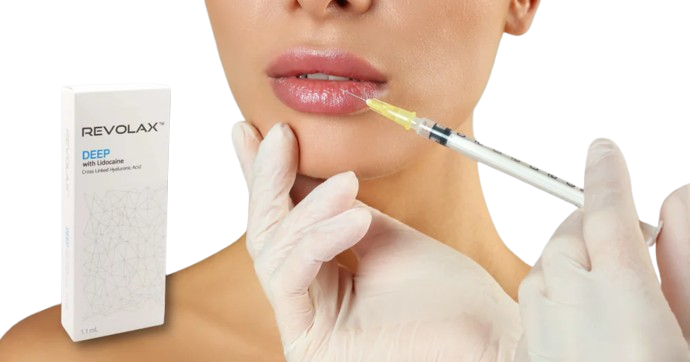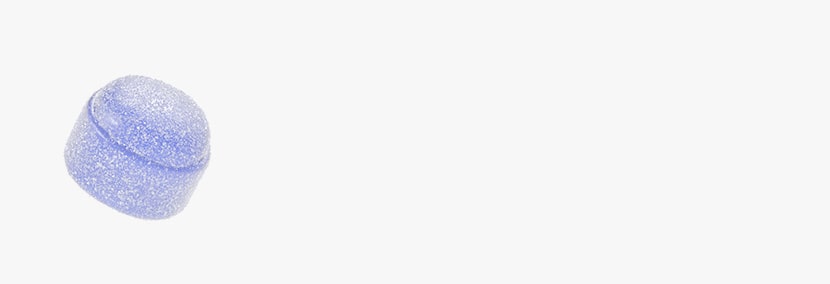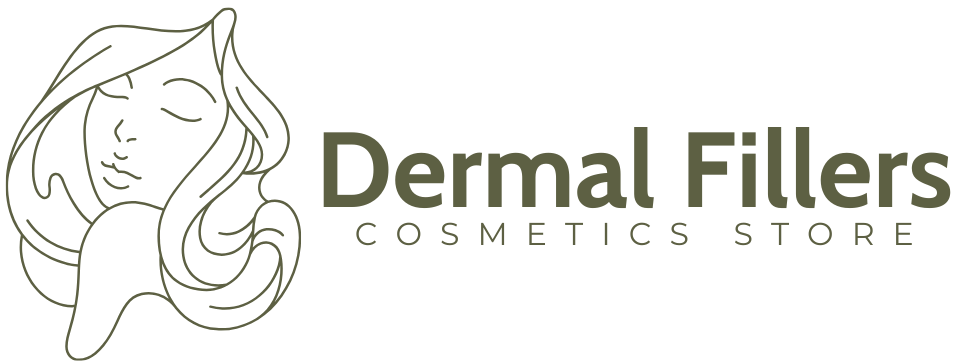Dysport
How Many Units of Dysport for Forehead?
Sep 14, 2025
Forehead lines are often one of the first signs that the skin is changing with age. Caused by the constant movement of the frontalis muscle—like when we raise our eyebrows in surprise or concentration—these lines can deepen over time, eventually sticking around even when the face is at rest. As natural levels of collagen and elastin decline, the skin becomes less resilient, and these once-temporary creases start to settle in.
Fortunately, treatments like Dysport, a type of botulinum toxin type A, offer a reliable way to smooth these lines. While the FDA officially approves Dysport for treating glabellar lines, it’s also widely and safely used off-label by trained providers to soften forehead wrinkles. The key to achieving natural, balanced results lies in the dosing—measured in units—which can vary depending on the strength of a patient’s muscles, their facial structure, and their aesthetic goals.
In this article, we’ll break down how Dysport is used for forehead treatments, including standard unit ranges, what influences the dose, and how professionals approach creating a treatment plan that’s both safe and tailored to each individual.
Key Takeaways
- Dysport is FDA-approved for glabellar lines and is used off-label by trained providers to treat forehead wrinkles by relaxing the frontalis muscle.
- Most patients see results within 2 to 3 days, with full smoothing effects visible around one week. Onset and duration vary depending on dose, metabolism, and muscle activity.
- A standard clinical conversion ratio is 1 unit of Botox ≈ 3 units of Dysport, though this is not FDA-approved and should be used as a guideline only.
- Dosing for forehead lines is personalized, generally ranging from 20–40 units for women and 40–60 units for men, depending on muscle mass and treatment goals.
- Forehead injections require precision, as over-treatment can lead to brow heaviness. Conservative dosing is especially important for new patients.
- Safety relies on proper technique, anatomical understanding, and post-treatment care (no rubbing, no lying flat, no intense activity for a few hours).
- Consulting a licensed and experienced provider is the best way to ensure results that are smooth, balanced, and natural-looking.
About: Trusted by over 2,000+ global clients since 2014, Maylips has become a leading supplier of cosmetic, skincare, and orthopedic products for medical and aesthetic professionals. Maylips offers a wide range of authentic brand-name products at competitive wholesale prices, sourced from around the world. If you’re looking to buy Dysport online, contact our sales team for guidance.
Dysport Dosing Principles for Forehead Lines
Dysport is an FDA-approved neuromodulator indicated for the temporary improvement of moderate to severe glabellar lines in adults. Its use on forehead lines (caused by repeated movement of the frontalis muscle) is considered off-label, though it is widely performed by experienced aesthetic injectors to help soften horizontal wrinkles and maintain a natural appearance.


The goal of forehead treatment is to reduce the appearance of lines while preserving the ability to show facial expression. Most patients begin asking, “How long does it take for Dysport to work?” Within two to three days, many start to see subtle improvements, with full smoothing effects often appearing after about a week. That said, onset and duration can vary based on the patient’s dose, metabolism, and muscle activity.
To tailor each treatment effectively, providers assess several individual factors:
- Muscle Strength: More active frontalis muscles generally require more units to achieve relaxation
- Wrinkle Depth: Deeper lines may benefit from slightly higher doses
- Treatment Preference: Some patients prefer light softening; others want a more smoothed-out effect
- Gender and Anatomy: Men may require higher doses due to greater muscle mass, though decisions should be based on the individual’s facial structure, not gender alone
- Patient History: Prior response to neurotoxins and facial symmetry influence how dosing is planned
This personalized approach helps balance wrinkle reduction with facial movement, ensuring results look refreshed, not overdone.
Unit Conversion: Dysport vs Botox Dosing Ratios
When switching from Botox to Dysport, practitioners must understand that their dosing units are not interchangeable. Although both are botulinum toxin type A products, differences in formulation and diffusion require different unit volumes.
A commonly used clinical guideline is a 1:3 conversion ratio (1 unit of Botox ≈ 3 units of Dysport). This is not an FDA-approved equivalence, but rather a practice-based convention used by experienced injectors. Actual dosing may vary depending on technique, treatment area, and patient response.


A few key considerations when converting between products:
- Potency and Diffusion: Dysport tends to spread more broadly, which may help cover wider areas like the forehead
- Patient History: Past experiences with either product can guide adjustments
- Muscle Mass and Strength: Larger or more active muscles often require more units
- Aesthetic Goals: Whether the patient wants subtle movement or smoother skin impacts dosing decisions
- Onset and Duration: These may differ slightly between Dysport and Botox, and should be factored into planning
For example, if 20 units of Botox are usually used for frown lines, that might convert to around 60 units of Dysport. Still, this is just a guideline—customized dosing always leads to the safest and most natural results.
Typical Dysport Ranges by Gender, Muscle Mass, and Goals
Dysport dosing for forehead lines must be customized to each patient’s facial anatomy and aesthetic preference. The frontalis muscle, which lifts the brows, plays a vital role in both expression and function. Over-treatment may cause unwanted brow heaviness, so careful planning is key.
By Gender
- Women: Often require 20–40 units for effective forehead treatment
- Men: May need 40–60 units, largely due to increased muscle thickness and activity
It’s important to note that dosing should not be based on gender alone but rather on individual muscle strength and facial movement.
By Muscle Mass
- Mild activity: 20–30 units may be sufficient
- Moderate activity: Usually 30–45 units
- High activity: Often 45–60 units
By Treatment Goals
- Subtle softening: Lower unit range allows more movement
- Moderate smoothing: Balanced approach with medium dosing
- Maximum reduction: Higher doses for a more smoothed appearance
These ranges offer a helpful framework, but providers must also consider how the frontalis contributes to brow elevation. Conservative dosing is advised to avoid brow ptosis, particularly in first-time patients or those with naturally low-set brows.
Injection Safety and Technique Considerations with Dysport
Safety and precision are critical when using Dysport to treat forehead lines. Accurate placement and careful dosing help reduce the risk of complications, which may include brow heaviness, asymmetry, or an unnatural appearance.
Key Considerations
- Targeted Injection Points: Staying away from areas too close to the brow helps prevent drooping
- Proper Dilution: Ensures accurate unit measurement and consistent spread of the product
- Gradual Dosing: Starting with a conservative dose allows for touch-ups if needed
- Detailed Anatomical Assessment: Every patient’s forehead is different; understanding their muscle pattern and brow position is crucial
- Post-treatment Care: Patients should avoid touching the area, lying flat, or doing intense physical activity for several hours after treatment
By following these principles, injectors can deliver results that are both safe and refined, preserving natural movement while reducing unwanted lines.
Conclusion
Determining how many units of Dysport to use for forehead lines involves balancing standard clinical ranges with individual patient anatomy, wrinkle severity, and desired outcome. In general:
- Women may receive 20–40 units
- Men may receive 40–60 units, depending on muscle mass and activity
- A 1:3 unit conversion from Botox is often used but should always be adjusted based on clinical judgment
Understanding Dysport’s timeline of results is also part of setting expectations. Patients generally notice changes within two to three days, with full results developing over the course of one week. Duration varies, but results tend to last around three to four months.
With safe injection practices and thoughtful customization, Dysport remains a reliable option for improving forehead lines while maintaining natural facial expression.
FAQs
1. How long does Dysport last on the forehead?
Most patients experience results for about three to four months, though some may notice benefits for up to five months. Duration varies based on factors like dose, metabolism, and muscle activity.
2. Is Dysport stronger than Botox?
Not necessarily. They’re measured differently. Dysport requires a greater number of units, but the clinical effect is comparable when dosed appropriately.
3. Can Dysport spread more than Botox?
Dysport has a broader diffusion pattern, which can be helpful for covering larger areas. However, precise technique is still required to control spread and avoid complications.
4. How soon will I see results from Dysport?
Many patients notice improvement within 2 to 3 days, with full results becoming visible in about a week.
5. Can Dysport cause my eyebrows to drop?
If injected too close to the brow or overdosed, brow heaviness can occur. Working with an experienced injector reduces this risk.
6. What happens if I need more units after my first session?
Providers often reassess results at the two-week mark and may recommend a touch-up if needed to fine-tune the outcome.
7. Is Dysport safe for first-time patients?
Yes. Dysport is safe when administered by trained professionals. First-time users often receive a conservative dose to monitor response and avoid unwanted side effects.
Talk with our sales representative.
Book a Meeting
References
Camargo CP, Xia J, Costa CS, et al. Botulinum toxin type A for facial wrinkles. Cochrane Database Syst Rev. 2022;2022(1):CD011301. doi:10.1002/14651858.cd011301.pub2
Swift A, Liew S, Weinkle S, Garcia JK, Silberberg MB. The facial aging process from the “inside out.” Aesthet Surg J. 2021;41(10):1107–1115. doi:10.1093/asj/sjaa339
Boyd K. Botulinum toxin (Botox) for facial wrinkles. American Academy of Ophthalmology. Published April 28, 2021. https://www.aao.org/eye-health/treatments/what-is-botox-facial-wrinkles
Dysport (abobotulinumtoxinA) injection, for intramuscular use. Highlights of prescribing information. US Food and Drug Administration. Revised October 2016. https://www.accessdata.fda.gov/drugsatfda_docs/label/2016/125274s107lbl.pdf





